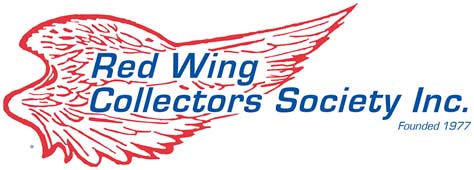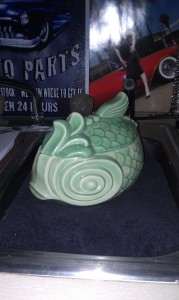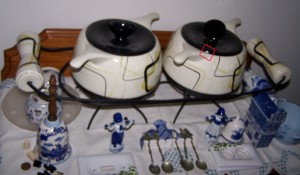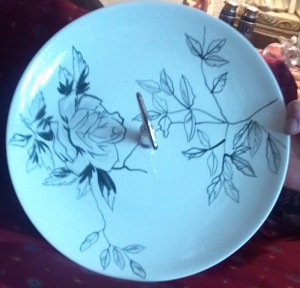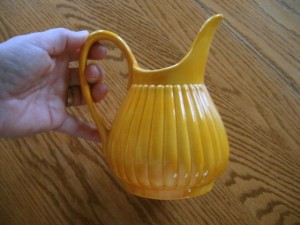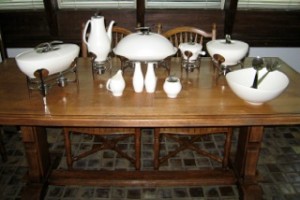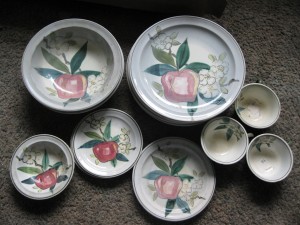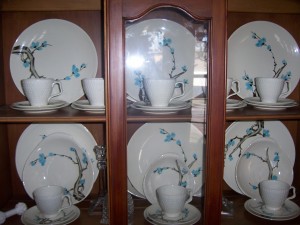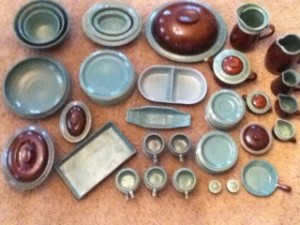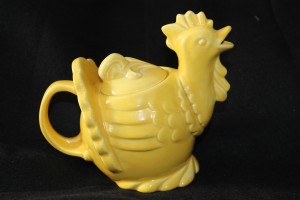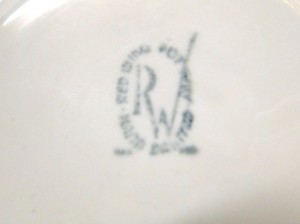Question:
Recently, my mother left me with a set of Tampico, I am wondering what its value might be. I’m not certain if I should try to sell it as an odd numbered set or try selling piece by piece…
There are a lot of pieces…
16 cup and saucers, 15 dinner plates, 8 salad plates, 11 bread and butter plates, 10 berry bowls, 11 cereal bowls, 2 sugar bowls with lids, 1 creamer, 1 divided vegetable dish, 2 8″ Serving bowls, 3 9″ serving bowls, 1 covered casserole, 1 large oval platter, 1 footed cake stand, 1 gravy boat, 1 relish dish, 1 butter dish, and a salt and pepper set. There is also a 10″ footed serving bowl with no melon or wine motif – just the speckled background. Is this another pattern?
The pieces are in good condition, except the following pieces have a small chip along the rim or edge:
4 of the berry bowls, 2 of the 9″ serving bowls.
Thank you for your kind consideration and all of the information provided on your website. It is invaluable!
Beth
Recently, my mother left me with a set of Tampico, I am wondering what its value might be. I’m not certain if I should try to sell it as an odd numbered set or try selling piece by piece…
There are a lot of pieces…
16 cup and saucers, 15 dinner plates, 8 salad plates, 11 bread and butter plates, 10 berry bowls, 11 cereal bowls, 2 sugar bowls with lids, 1 creamer, 1 divided vegetable dish, 2 8″ Serving bowls, 3 9″ serving bowls, 1 covered casserole, 1 large oval platter, 1 footed cake stand, 1 gravy boat, 1 relish dish, 1 butter dish, and a salt and pepper set. There is also a 10″ footed serving bowl with no melon or wine motif – just the speckled background. Is this another pattern?
The pieces are in good condition, except the following pieces have a small chip along the rim or edge:
4 of the berry bowls, 2 of the 9″ serving bowls.
Thank you for your kind consideration and all of the information provided on your website. It is invaluable!
Beth
Answer:
Please see the “How can I sell my Red Wing Pottery pieces” section for advice on selling Red Wing. This advice can be found on the RWCS website under “FAQ” under the “About Us” menu. You may want to consider selling 8 place settings (dinner plate, salad plate, B&B plate, berry bowl, cereal bowl, cup & saucer) as a unit, then sell the rest of the pieces individually.
Values below are for items in excellent undamaged condition. Damage reduces the value by 25 to 75% or more, depending on the extent and location of the damage.
Dinner plate: $15-20
Salad plate: $7.5-12
B&B plate: $5-10
Cup & saucer: $10-15
Cereal bowl: $ 10-15
Sauce dish (berry bowl): $5-10
Sugar bowl & cover: $12-15
Creamer: $12-15
Divided vegetable dish: $25-30
Rim soup bowl (8”): $15-20
Nappy bowl (9”): $15-20
Covered casserole: $40-50
Platter 13” or 15”: $25-40
Gravy boat: $25-30
Cake stand: $40-60
Relish dish: $15-20
Covered butter dish: $20-25
Salt & Pepper: $20-25
The beige fleck serving bowl with no decoration is not a part of any dinnerware pattern. This bowl is among a number of beige fleck-glazed accessory items that Red Wing sold as giftware. These could be used alone, or they could be matched with any of the beige fleck patterns such as Tampico, Bob White or Lute Song. This bowl is common and is worth around $15.
Larry
